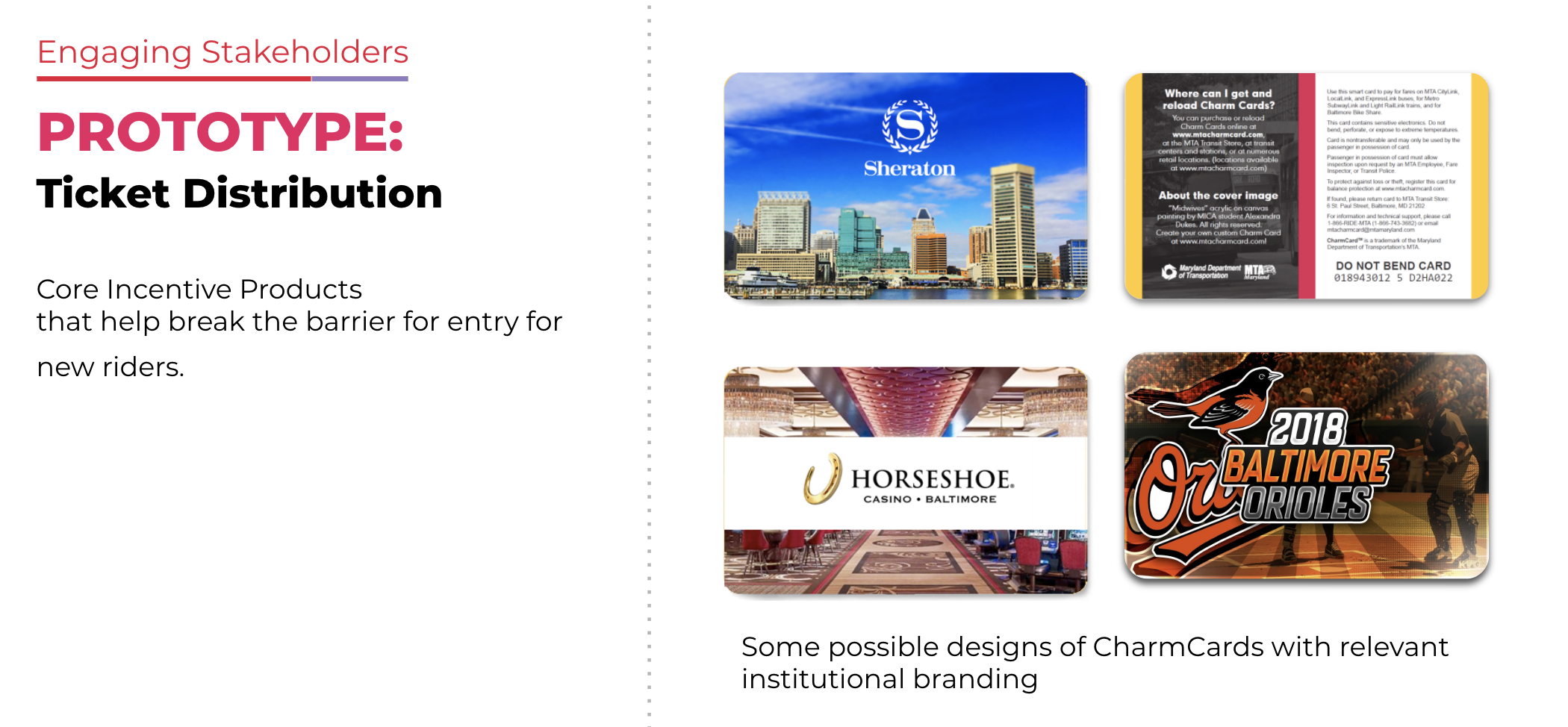Maryland Transportation Authority owns and operates the Baltimore Light Rail Link. Historically the light rail has been sort of not so shiny transport mode in some sections of Baltimore. MTA was taking up a major expansion of their entire ecosystem structured around Baltimore Link branding initiative. Inclusion of light rail into the integrated transportation ecosystem was one of the major challenges for the organization. The other major issue was around wayfinding.
By applying Design Thinking and Service Design principles through out this effort, we dug deeper into the hidden behavioral insights surrounding the perception and use of Light rail by the local population in the city of Baltimore. These insights also helped us in crafting solution proposals that would enable visitors and transient populace to the city to adopt the light rail as an important and iconic mode of transportation in the city.

Personas:
Developed six personas after a couple rounds of observation of light rail use and practice, as well as ethnographic interviews. These six personas encompass both the way-finding as well as the perception people carry when it relates to usage issues surrounding the light rail. From first time users, to mandatory (those who have no other means of transport) and habitual users, our personas helped us explore how interactions surrounding their lifestyles and their interaction with the light rail system had resulted in the formation of public and private perceptions that ultimately affected the MTA ecosystem.

Research Overview:
15 in-depth, user and non-user interviews This included people from all ages, residents and visitors both on weekdays and Weekends during peak and non-peak hours of operations.
10 Extended observational research sessions - Included immersive observation sessions at many stations, ticketing counters, trains and transport hubs. Some of these sessions were also participatory observations where we participated by taking the transit as a passengers.
5 Months of ongoing research and analysis - This included secondary and casual observational research, monitoring of local publications, news stories, and social media.
Design Goals
Meet original needs of the MTA while addressing deeper behavioral patterns and perceptions of current light rail users, potential users, and the citizens of Baltimore.
Ensure all solutions are valuable to MTA and the stakeholders that would help in integrating other means of transportation that MTA owns, are geared towards immediate implementation and is scalable for the future.
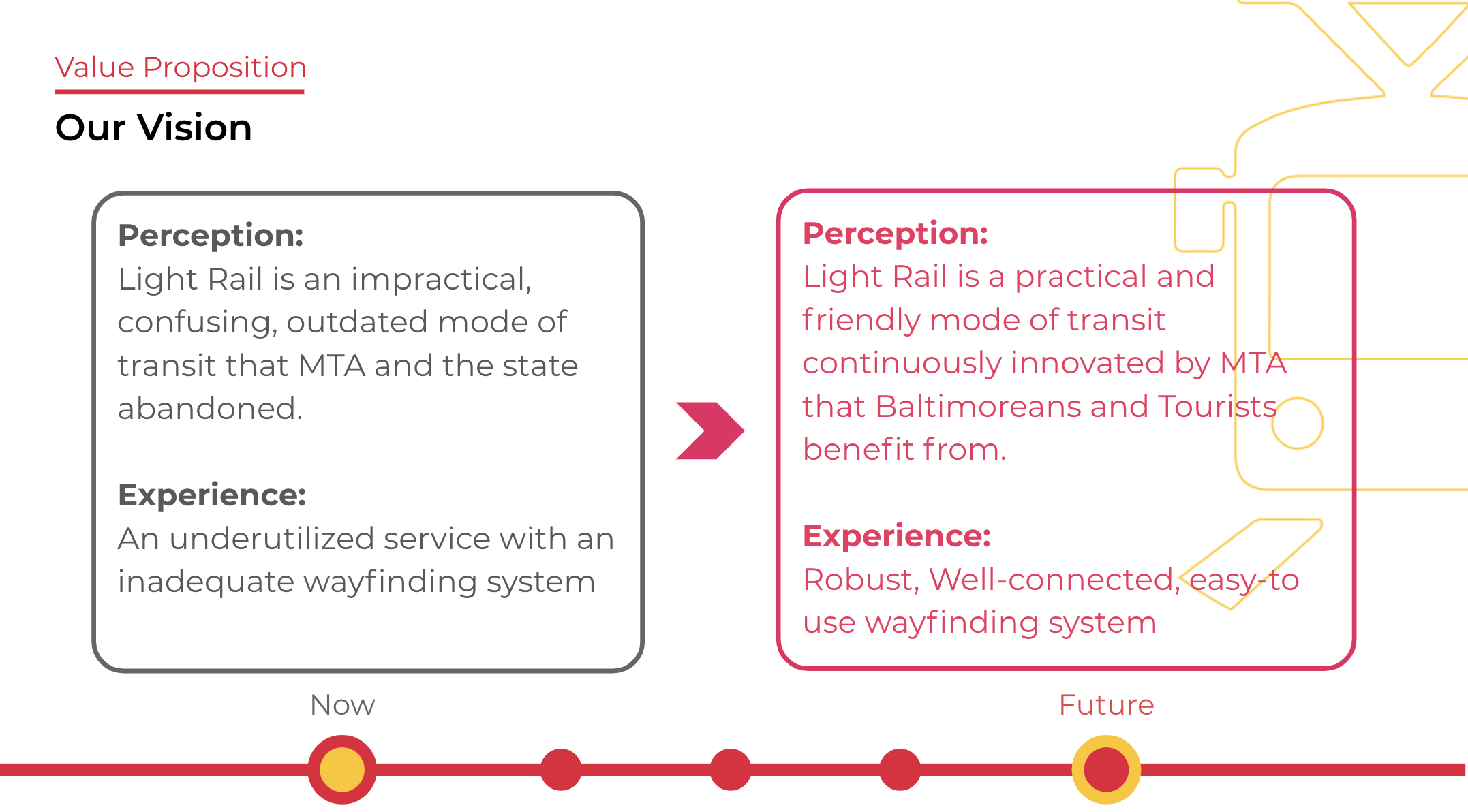
Overall Observations and Insights:
During our interviews and observations we discovered that wayfinding for the Light Rail was inconsistent and difficult. Listening to stories of passengers missing flights, taking the wrong trains because of directional inconsistencies in signage, and inability to locate stations indicated that there was an immediate need for wayfinding solutions.
Damaged, outdated, or missing maps combined with directional confusion while on station platforms harms user experience and perception of Light rail.
Design Goals
Mitigate directional confusion.
Help users connect to and from other modes of transit.
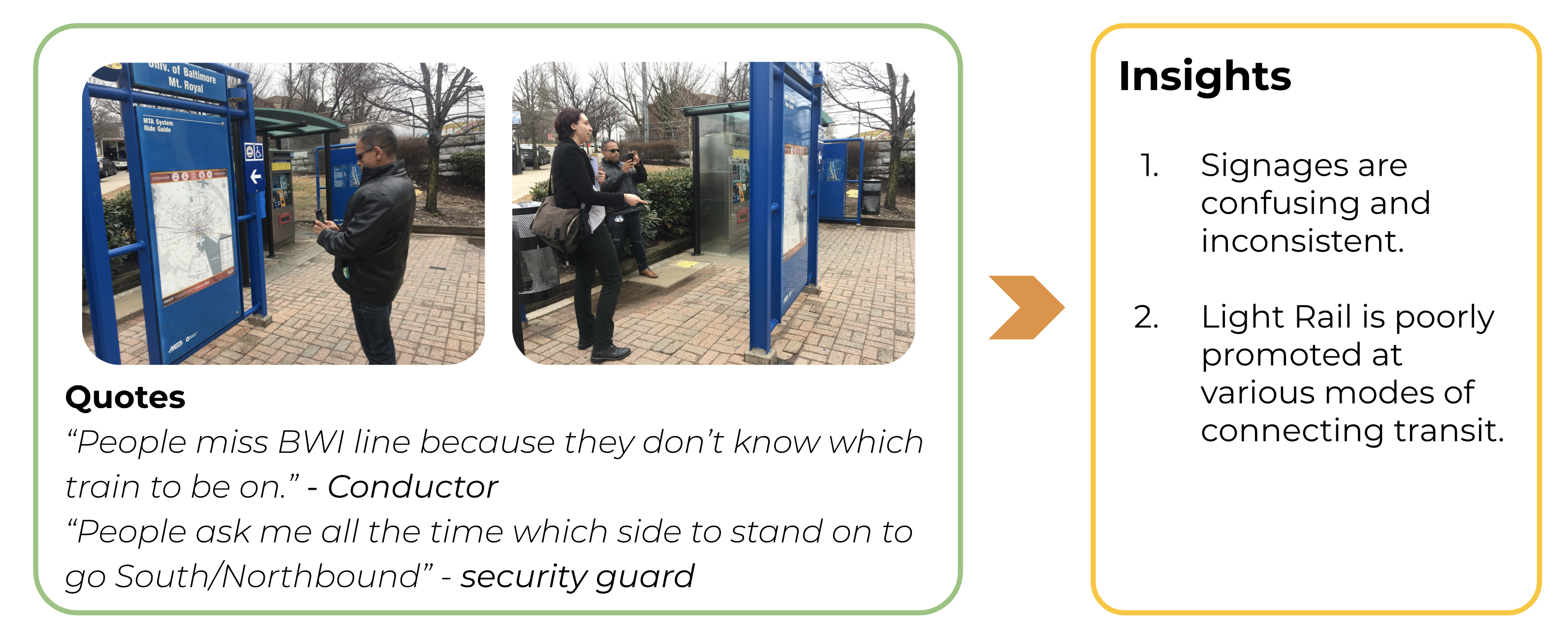
Directional maps
Prototyping: Solution 1
Guidelines
To correspond to actual North and South. (2 versions North/South for installation, Stickers for Indicating current stop)
Indicate current location (Stickers method may be used for production efficiency)
Placed at eye-level to be visible from station entry point.
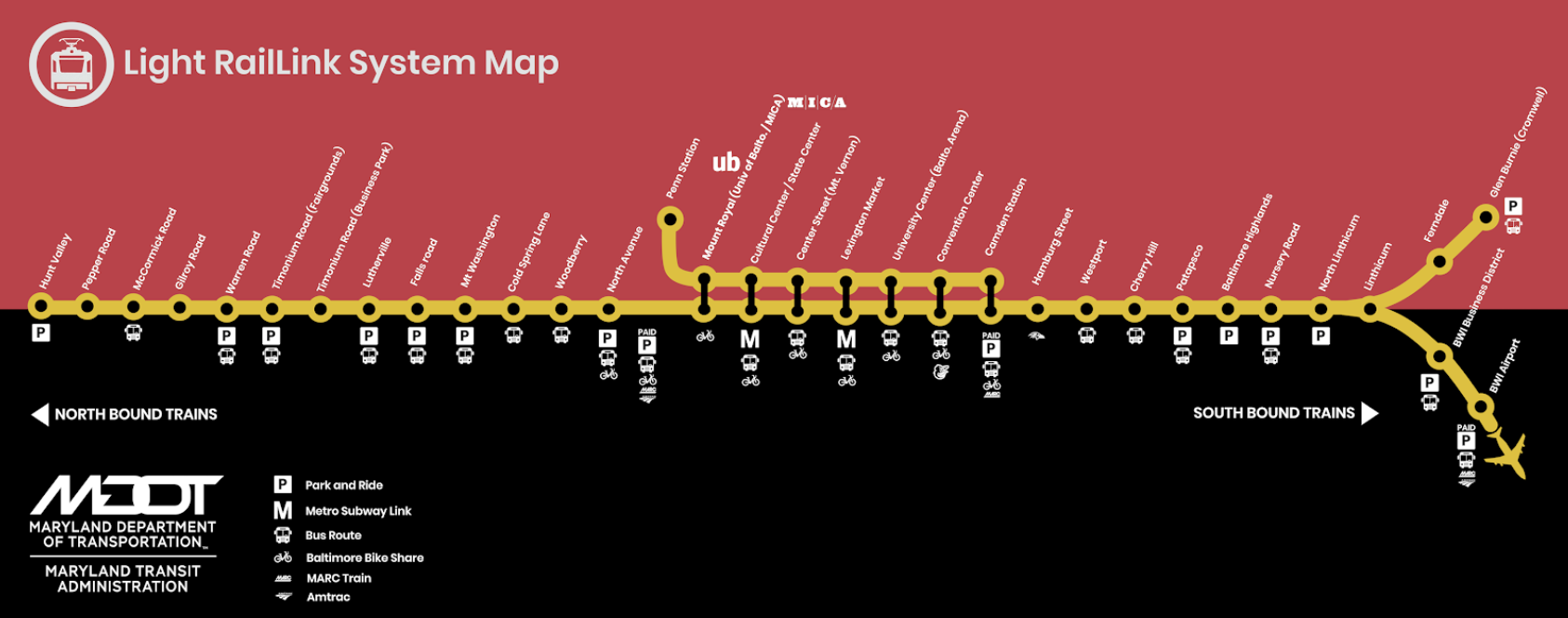
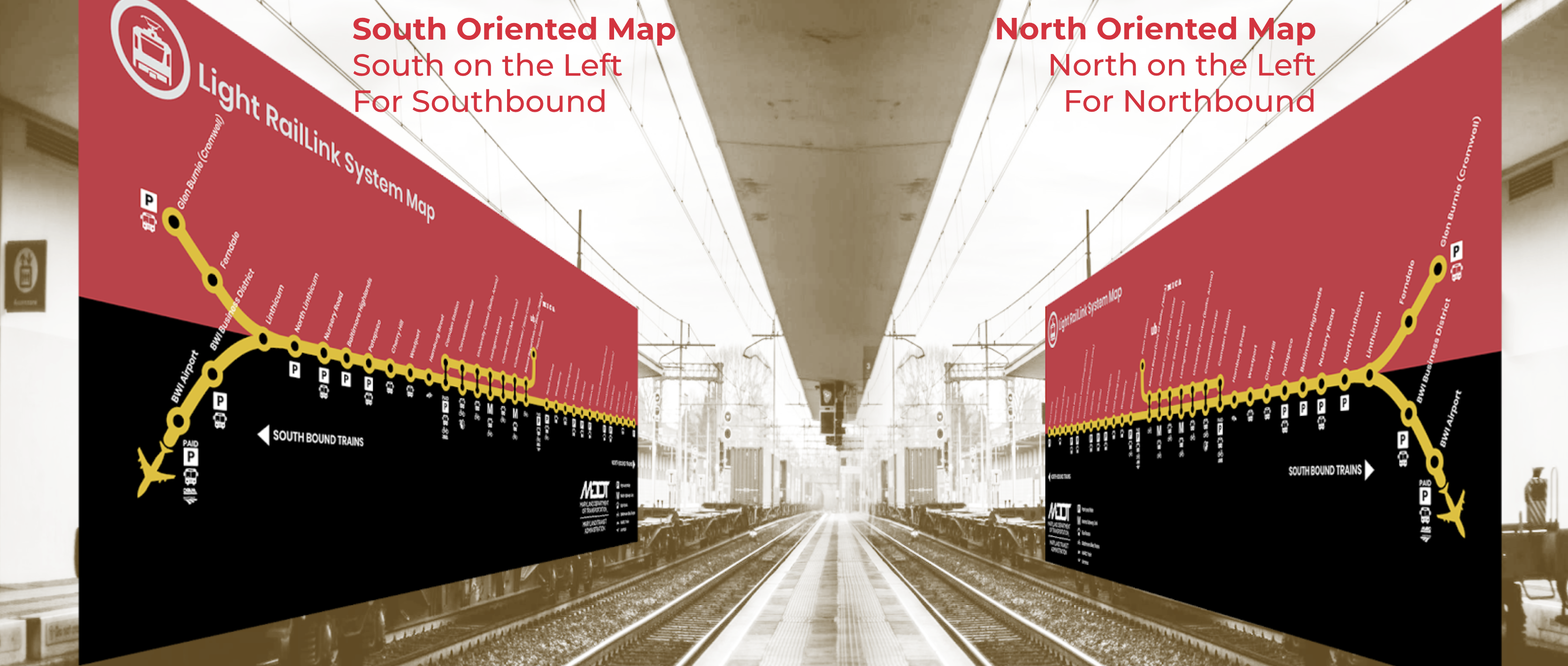
Improving wayfinding experience
Background
One of our personas was developed from the perspective of a tourist exiting the Bolt bus and attempting to utilize light rail to navigate the city. Placing simple directional signage at the bus stop was well received by passengers.
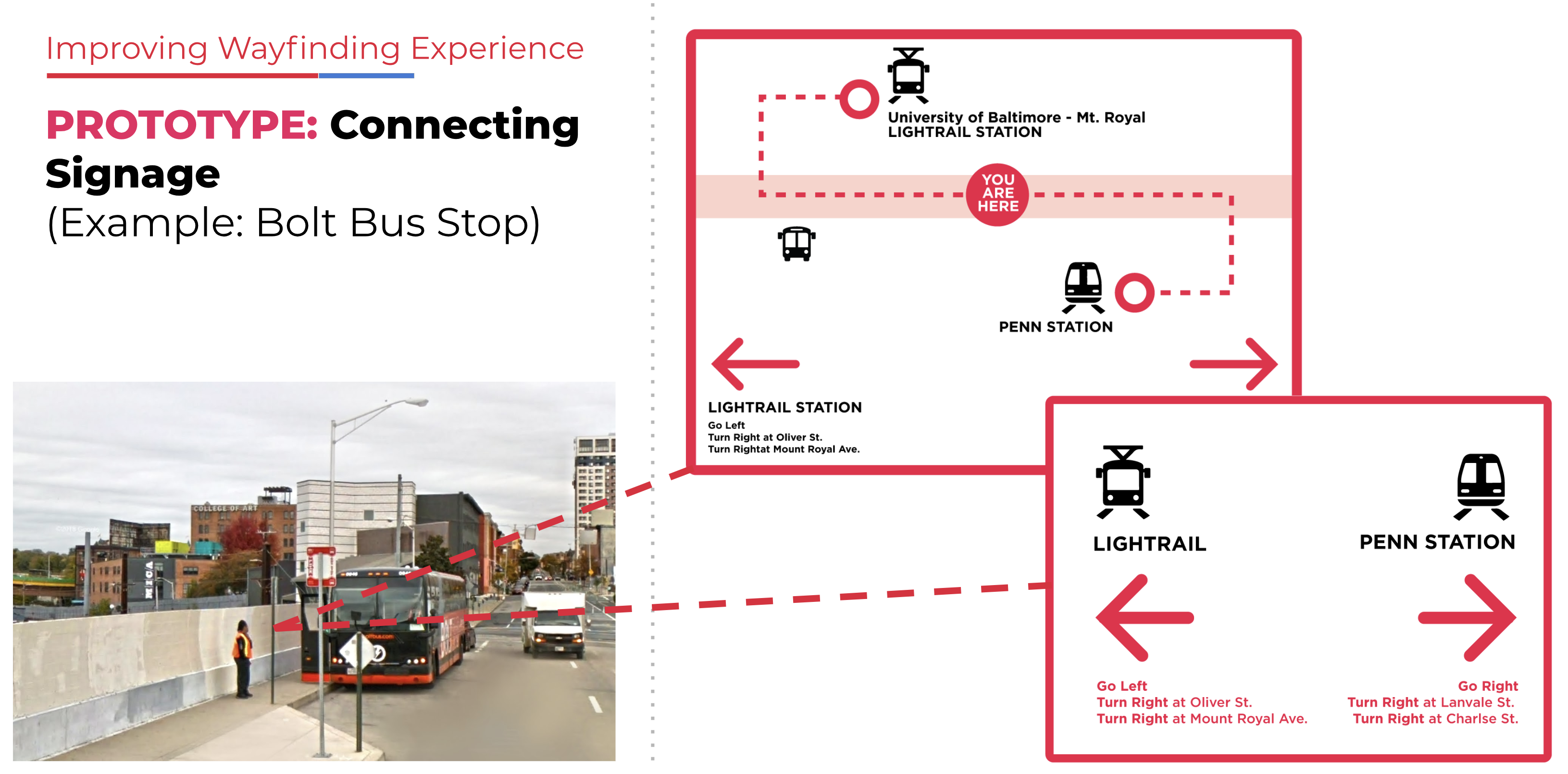
Prototyping: Solution 2 Street Signage
Guidelines
By erecting street signage, people loved it and found useful.
Actions:
Doable: MTA indicated that budgeting and installation of this type of signage is doable
Valuable: Bolt bus users said they wanted this kind of signage and information
Defensible: A low cost wayfinding opportunity
Scalable: Small, inexpensive signage can be created quickly and greatly enhance wayfinding during transit connections.
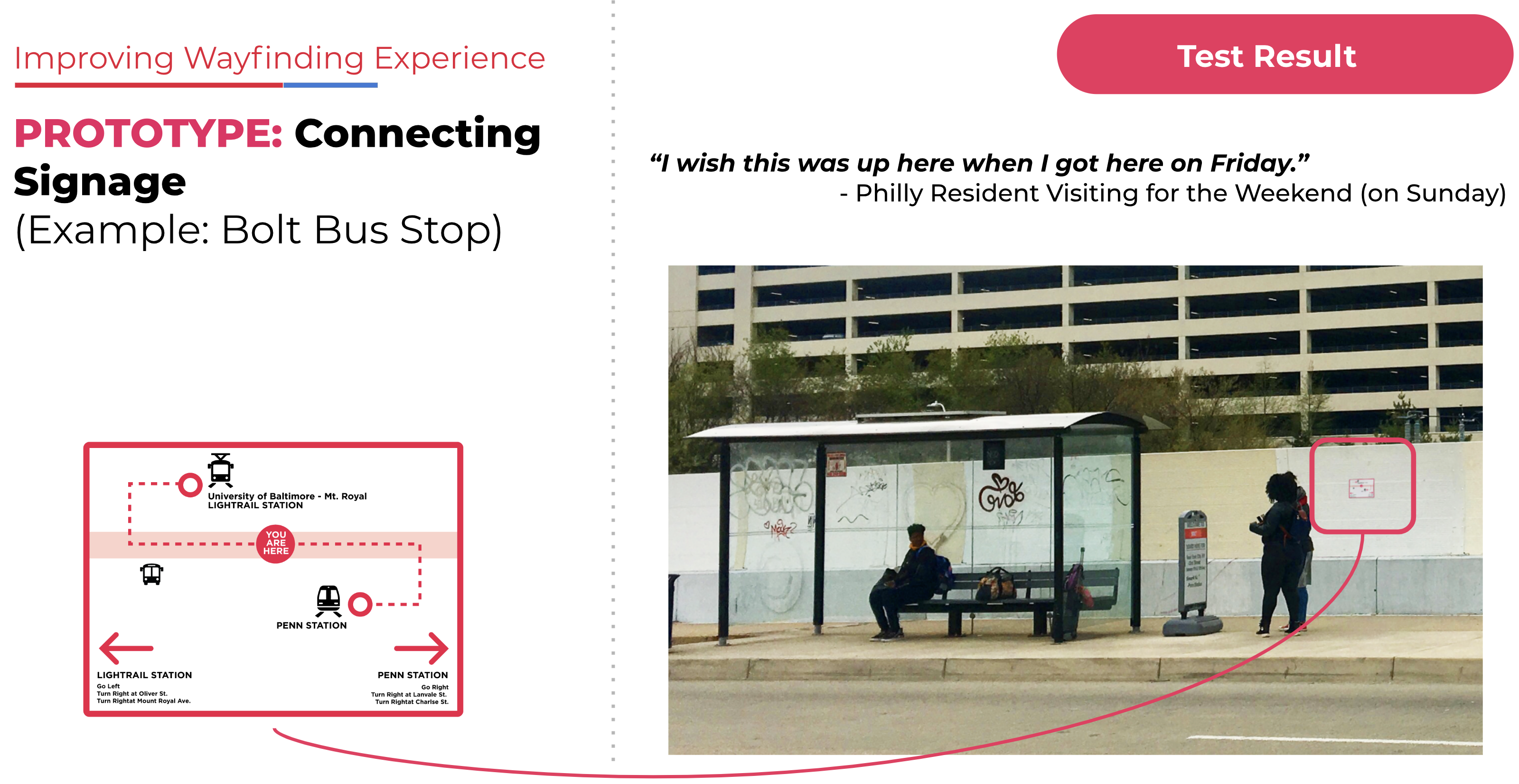
Accessibility and mobility readiness
Prototyping: Solution 3 -Testing accessibility and mobility
Guidelines:
Light Rail provides an accessible platform that enables riders with mobility needs space to board and de-board without slowing down other passengers
Insights:
Light Rail provides an accessible platform for mobility challenged users but these structures have weathered over time and current state structural design challenges create huge risks for mobility-challenged users.
Goals:
Updating and maintaining stations for accessibility is necessary even though it may be costly.
Build an existing strength of light rail link accessibility.
Engage youth population and leverage community service requirements to enhance Light Rail experience for mobility-challenged
Engaging - public partnerships - Journey Mapping to identify opportunities
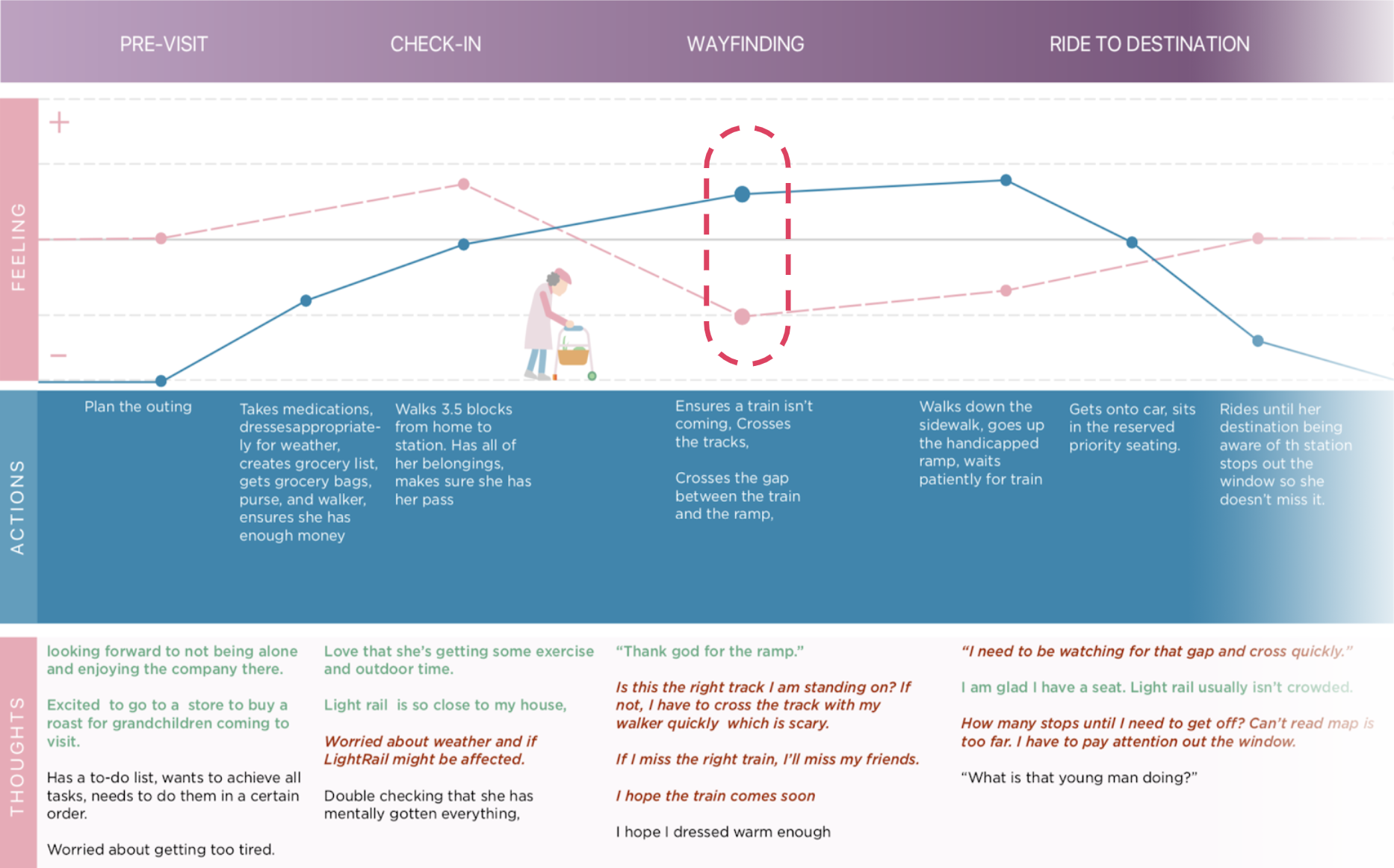
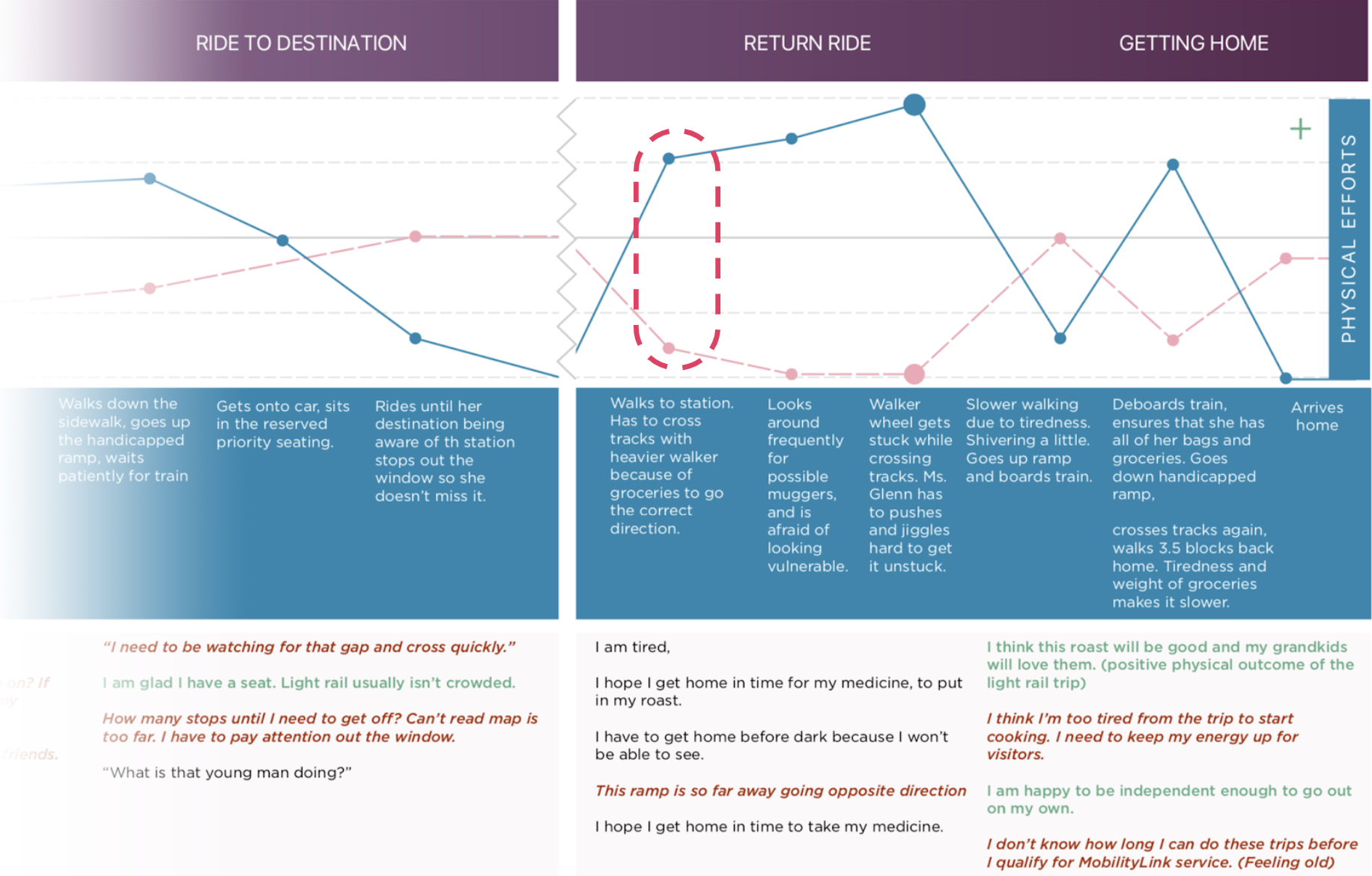
Engaging youth volunteers
Insights:
Light Rail provides an accessible platform for mobility challenged users.
While accessible, structural design challenges create huge risks for mobility-challenged users.
Goals:
Build on existing strength of Light Rail Link accessibility
Engaging youth population and leveraging community service requirements to enhance Light Rail experience for mobility-challenged would be a great social and community engagement exercise.
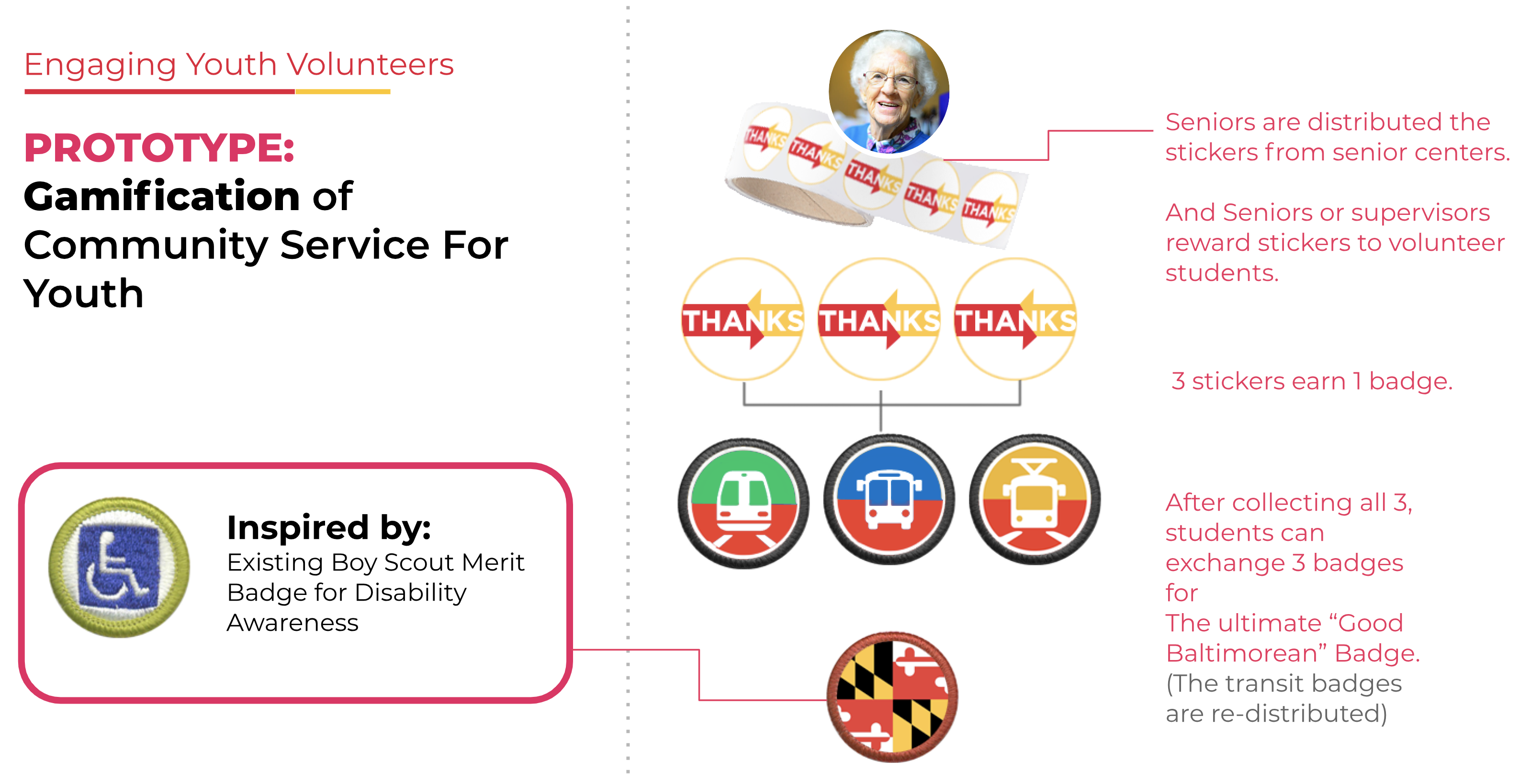
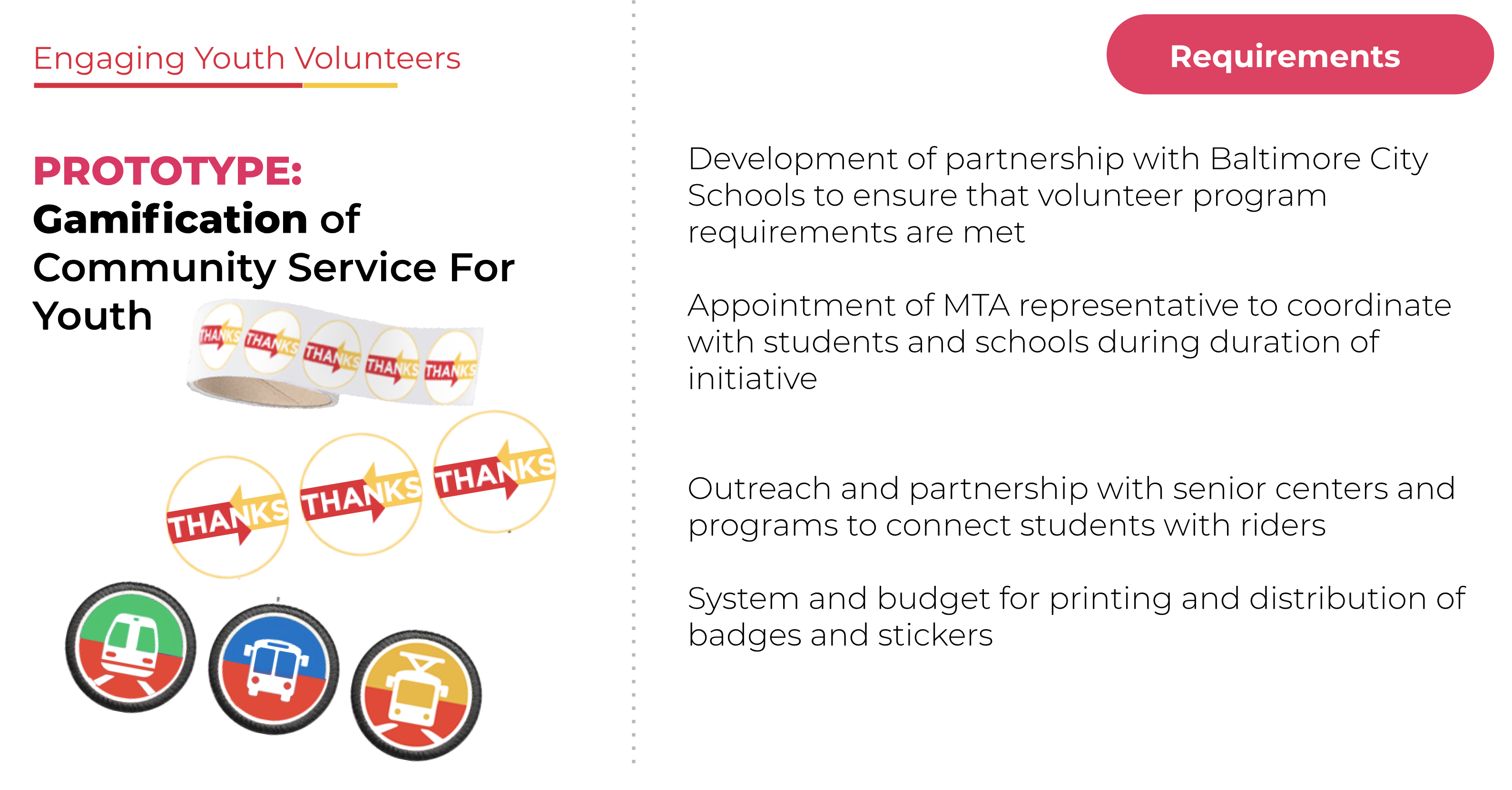
Potential partnerships and collaborations
Prototyping: Solution 4 - Partnerships and promotions
Observations:
Light Rail reaches many destinations in Baltimore. Lack of support behind Light Rail from Tourism sector in the city including poor support from the hospitality sector where hotels provide poorly designed and not so user friendly brochures have resulted in the lack of any response from the tourists and visitors to the city. The most interesting observation was with the Convention center where there was no map related to the Light Rail which could be a great connectivity and transportation mode for all the events.
Goals:
Build awareness about light rail and its value proposition for tourism.
Create incentives and value for businesses and their customers to support MTA
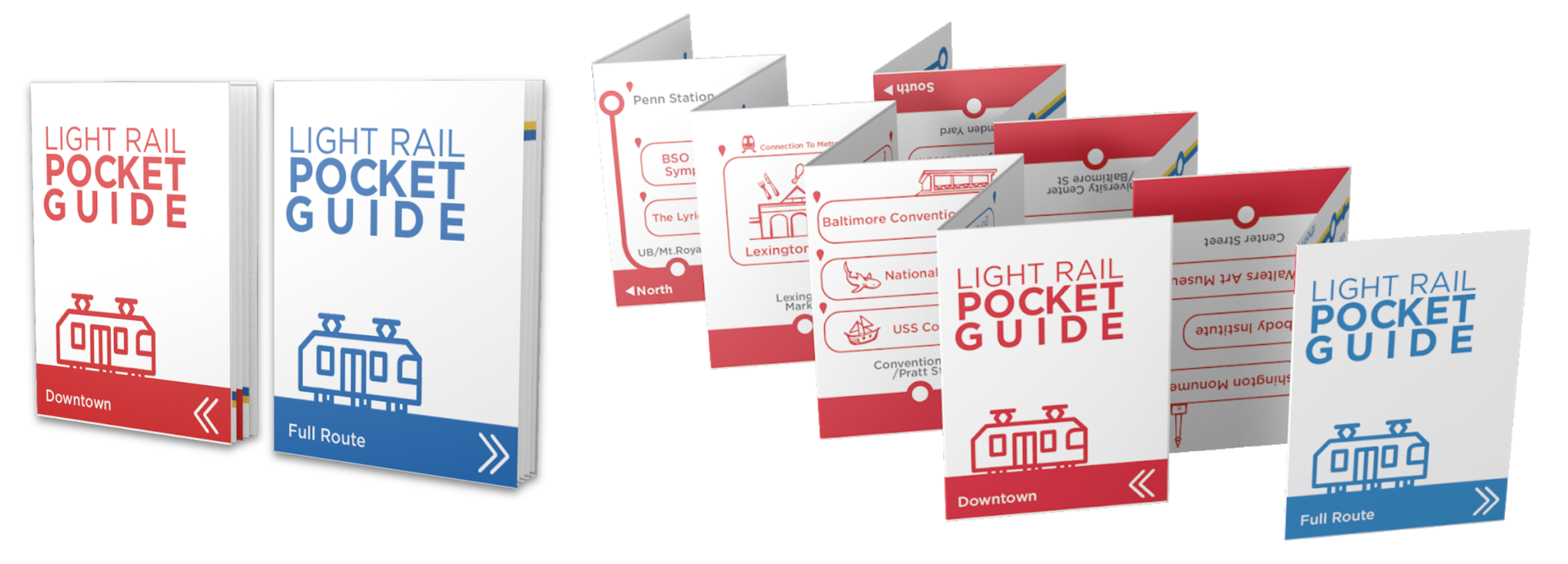
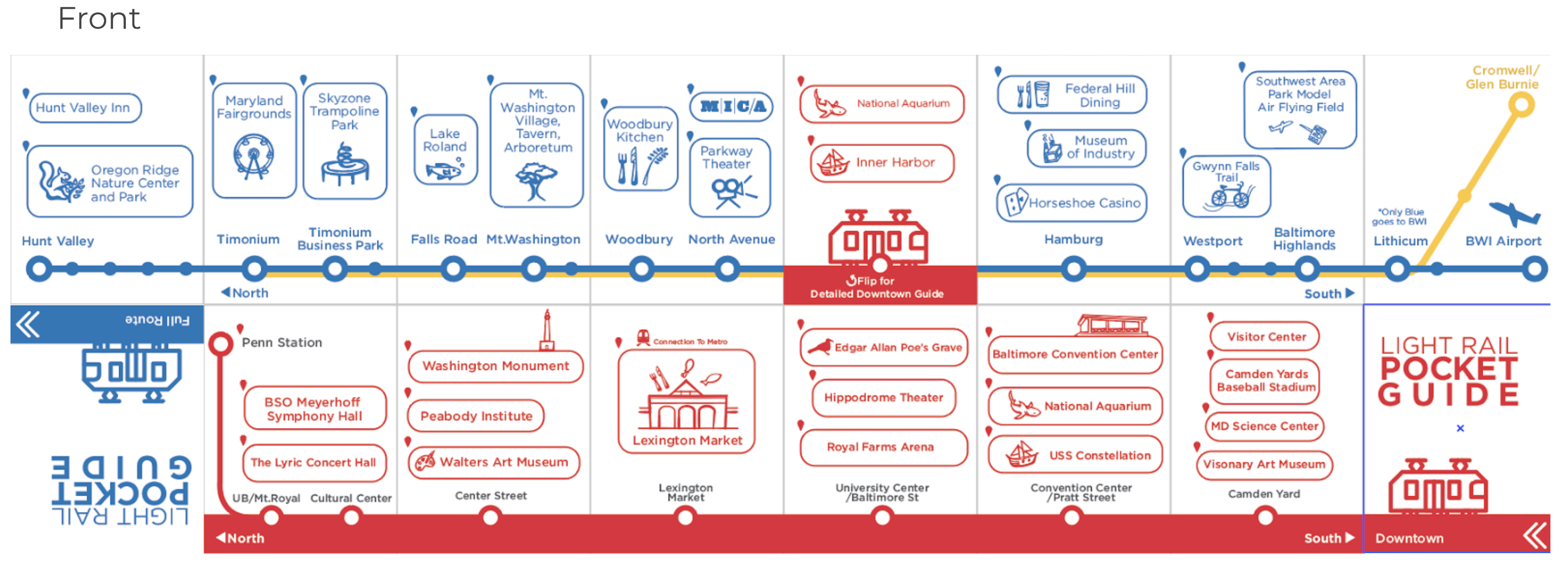
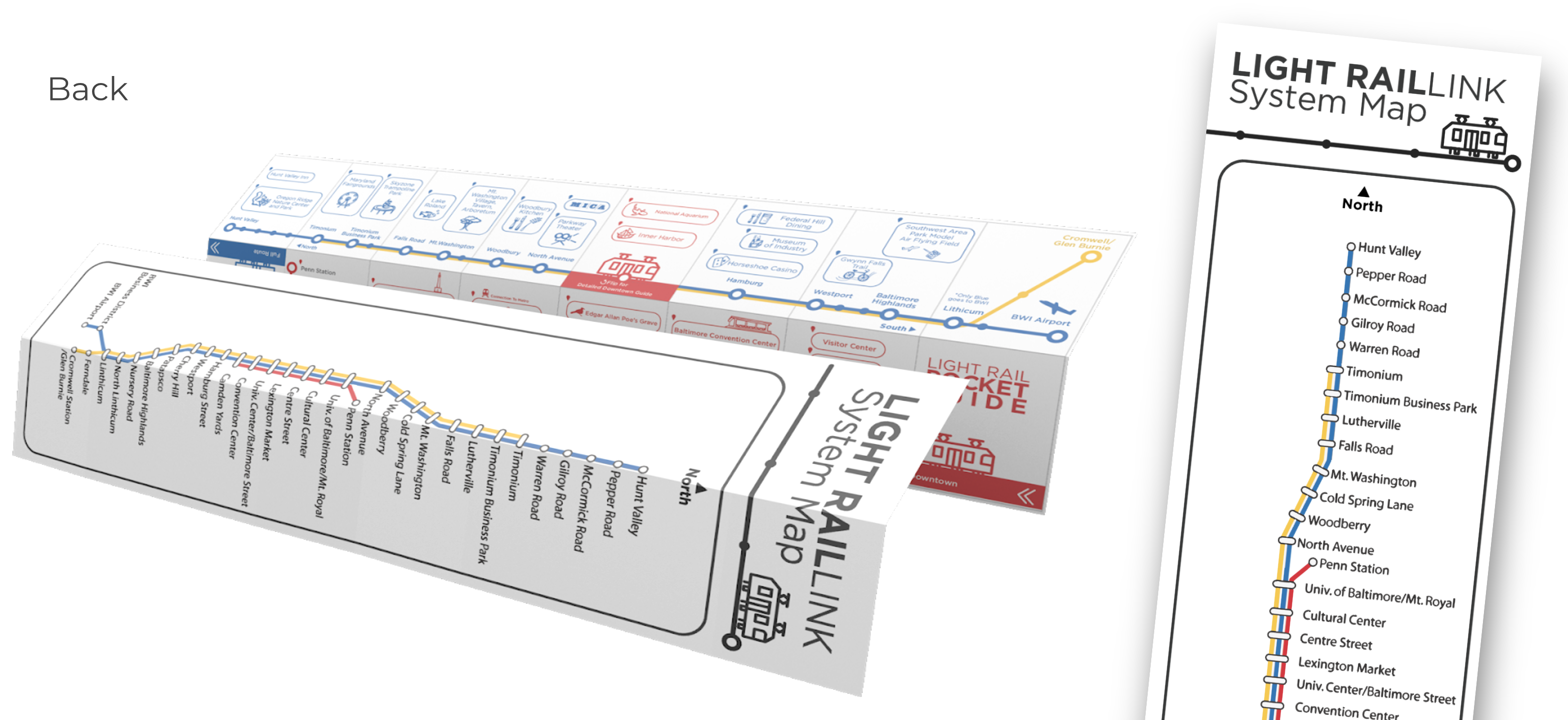
Prototyping: Solution 5 - Partnerships and promotions
A sample of how we can include public transit tickets with the purchase of tickets.

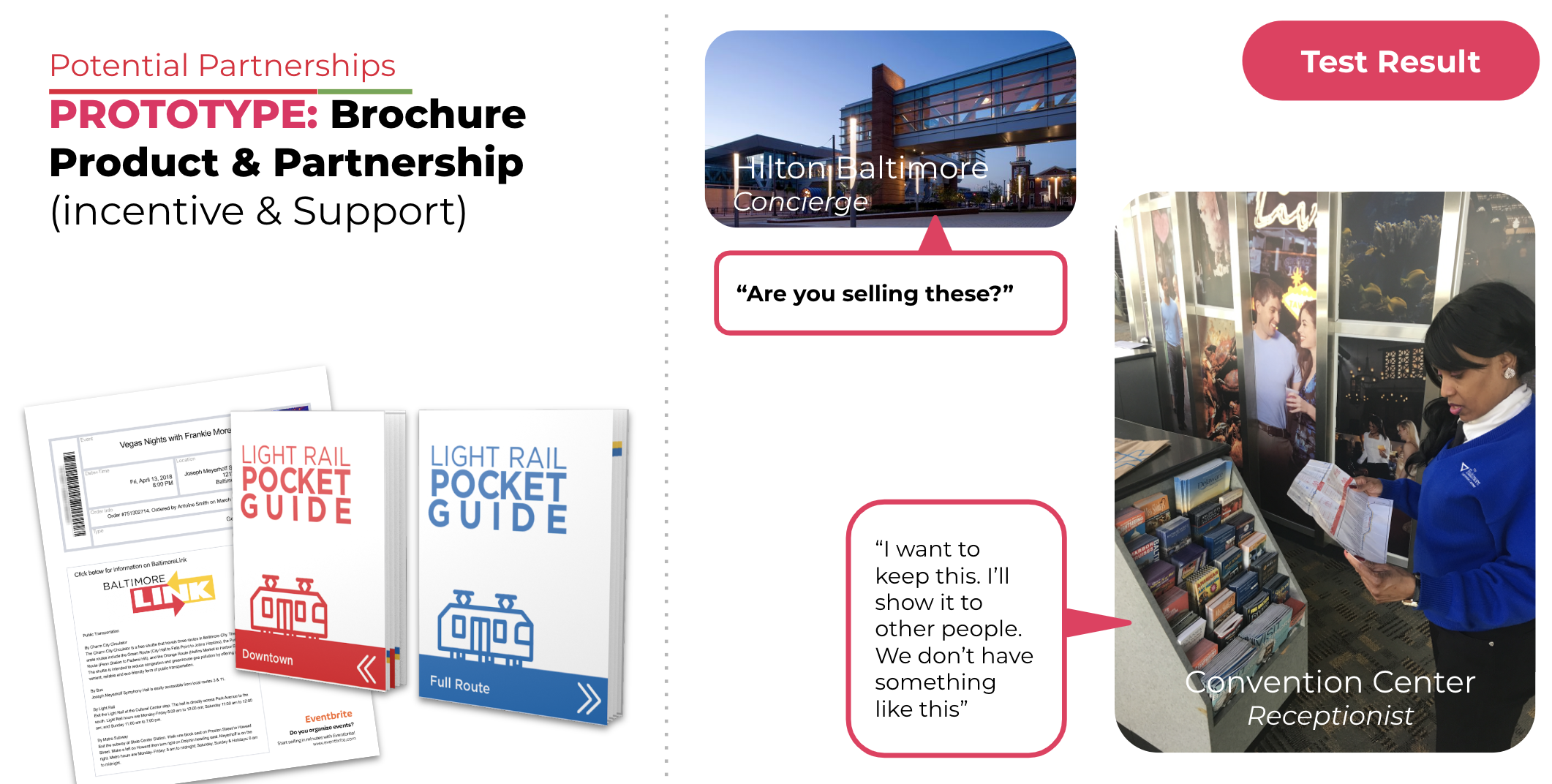
Engaging Stakeholders
Prototyping: Solution 4 - Partnerships and promotions
Observations and insights:
Public perception of Light Rail users tend to be pretty skewed especially around the type of people who traveled in it.., it was also thought that this is meant for people from the lower-socio-economic status. People think Light Rail is ‘sketchy’ but on the contrary, MTA has been named safest transit system in 2018 (4th year in a row.)*
However there was an exception to the Game day crowd that had people from all demographics use the system to get to the game venue and other places along the transit line.
Insights:
Perception issue “Not for me” Mentality
Tourists/Potential Users have negative pre-conception
Locals are not supportive
Goals:
Change perception through influence and brand messaging.
This will engage new passengers on the train who will have neutral outlook towards light rail and gradually will help change the thought process across the demographics.
